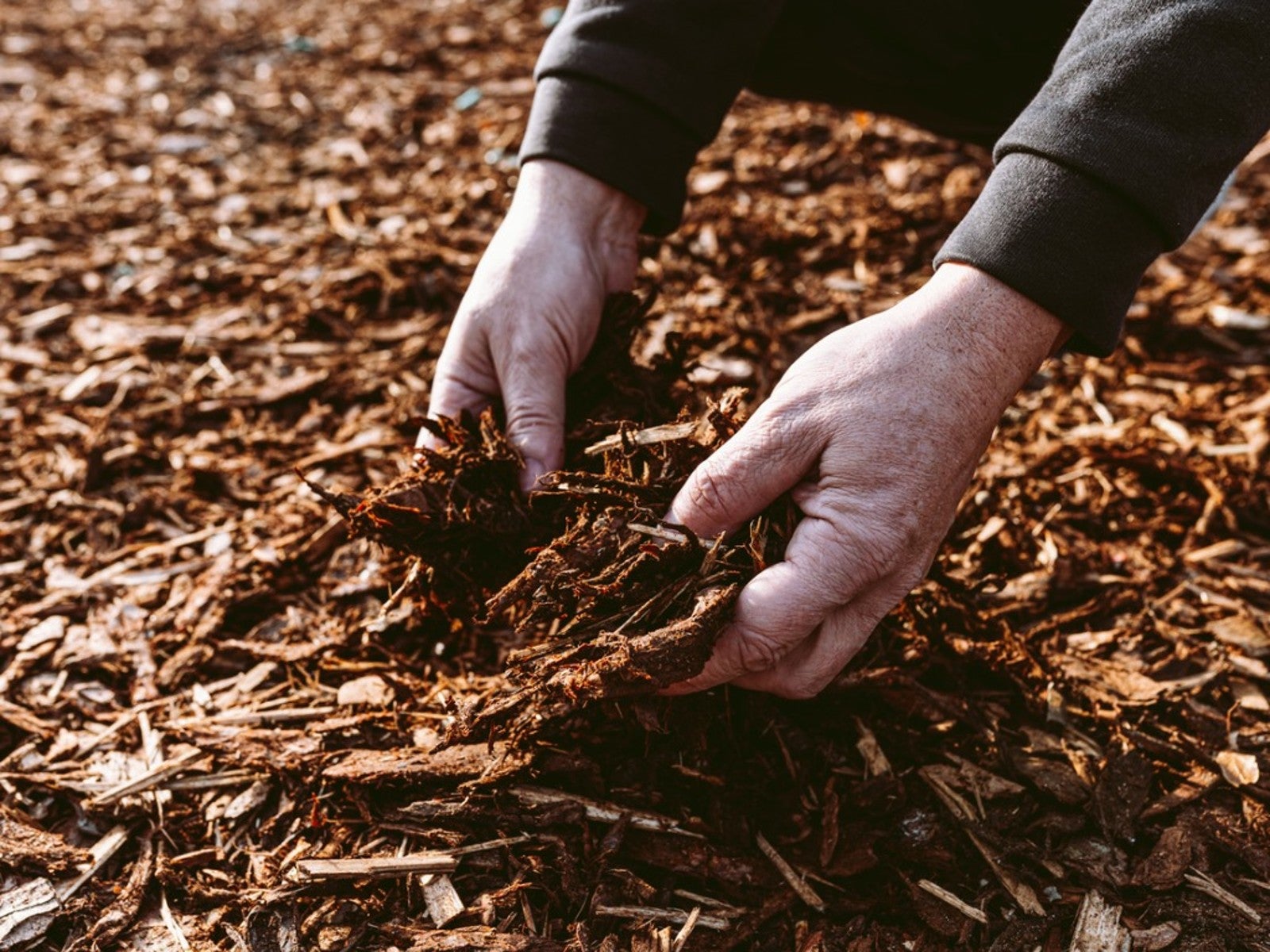Back To Eden Gardening: Everything You Need To Know


Back to Eden gardening is a simple but effective technique and philosophy for growing plants. It is sustainable, organic, and focused on soil regeneration. The idea is to recreate the natural conditions in which plants grow and thrive, which reduces the need to weed, water, and do other garden chores.
About the Back to Eden Method
The Back to Eden gardening method was developed and is promoted by gardener and arborist Paul Gautschi. His idea was to get back to the garden of Eden with no-till and organic principles. The method builds and regenerates healthy soil using strategies like composting, using cover crops, and not tilling the soil.
Wood Chip Gardening
Back to Eden gardening employs many organic and sustainable strategies, but the foundational technique is wood chip gardening. This is the practice of covering the soil in a bed or vegetable patch with natural wood chip mulch that decays over time.
While wood chip mulch is nothing revolutionary in gardening, the way Eden gardeners use it is a little different. The idea is to leave the mulch in place to break down and enrich the soil. There is no tilling involved and no weeding either. This mimics what naturally happens as plants grow without human intervention.
Other Back to Eden Garden Methods
In addition to wood chips, the Back to Eden method uses other organic and sustainable gardening practices:
- Totally organic practices, with no herbicides, pesticides, fertilizers or genetically-modified plants or seeds
- Using compost to enrich the soil and feed plants
- Cover cropping to reduce soil erosion and increase organic matter in the soil
- No tilling to help soil retain more water, organic matter, and carbon that would otherwise be released into the atmosphere
- No watering and no weeding necessary
How to Start a Back to Eden Garden
No-till, wood chipping gardening is easier to do than you might think. Start by choosing a spot for your garden. There is no need to till or prepare the soil.
- An optional first step is to cover the area with a layer of newspaper. This isn’t necessary, but it will help reduce the growth of grass or weeds.
- Next is a nice thick layer of compost. Cover the area with three to four inches (7.5 to 10 cm) of good quality compost. Unless you have been preparing in advance for this, you will probably need to purchase compost. It’s not too expensive in bulk.
- Finally, layer the entire area with six inches (15 cm) of wood chips. This seems like a lot, but it is the linchpin of the whole system, so don’t skimp on it. If you have enough wood chips, you might not need the newspaper step to keep weeds at bay.
- When you’re ready to plant, simply scrape aside the mulch to sow the seeds into the compost below. Sow to the appropriate depth based on the seed type. Water the area gently, then move the mulch back into place. This is the only time you will need to move the wood chips or water your garden. Once the seeds are planted, sit back and watch your garden grow.
Choosing Wood Chips
Selecting the right wood chips is essential for this gardening technique to be effective. Avoid standard bark mulch, decorative mulches that have been died, and sawdust or wood shavings.
Gardening tips, videos, info and more delivered right to your inbox!
Sign up for the Gardening Know How newsletter today and receive a free copy of our e-book "How to Grow Delicious Tomatoes".
The best option is freshly chipped wood from nearly any type of tree. The mix should include a variety of chip sizes and shapes as well as leaves that will add nitrogen to the soil. Contact tree trimming services to source this kind of mulch. You should be able to get the mulch for free or at a very low price.
If done correctly, the Eden style of gardening should provide healthier vegetables and greater yields. It also sequesters carbon better than standard gardening and is sustainable and organic. If you can find inexpensive wood chips, it might be worth a try.

Mary Ellen Ellis has been gardening for over 20 years. With degrees in Chemistry and Biology, Mary Ellen's specialties are flowers, native plants, and herbs.